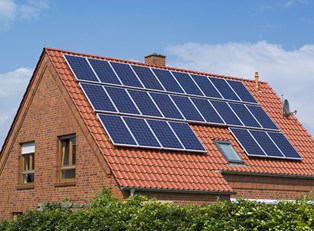If you’re looking to decrease your carbon footprint, it can be great to invest in solar panels as a more affordable energy source. Solar panels use energy from the sun to power anything that requires electricity or power. There are different kinds of solar panels, so if you’re looking to invest in some as an energy source, you should know what the different types are.
Two Main Types of Solar Panel Cells:
Solar panels are integrated in different ways, but it’s important to know the different types of solar panel cells, their efficiency, and their uses.
Monocrystalline Silicon (Single-Silicon)
Monocrystalline silicon solar panels have cells that are made up of single-crystalline silicon. Basically, this means that these solar panels are made out of cylindrical shaped cells to increase energy efficiencies and minimize the costs. Because they are made of the highest-grade silicon, Monocrystalline silicon solar panels are the most efficient solar panels you can buy. They also require the least amount of space since they are the most efficient, and they tend to have the longest lifetime. Most single silicon solar panel manufacturers put a 25-year warranty on them. Additionally, single-silicon solar panels are known for performing better than other types of solar panels when there is limited sunlight. However, single-silicon cells are the most expensive solar panels you can buy and can break down if covered by large amounts of snow or shade.
Polycrystalline Silicon (Multi-Silicon)
Multi-silicon solar panels are made by melting raw silicon, cooling it, and cutting it into perfect square wafers in a mold. This process is less costly and simpler than the Monocrystalline method, which makes multi-silicon solar panels cheaper. The main difference between polycrystalline and Monocrystalline solar panels is the purity levels of the silicon. Because polycrystalline are less pure, making them produces less waste than Monocrystalline, but it also means polycrystalline are less efficient than Monocrystalline. Polycrystalline typically only have a 13-16% efficiency, which means you tend to need more of them and more space for them to get the amount of energy you need.
Two Types of Integrated Solar Panels:
Building-Integrated Photovoltaic (BIPV)
BIPVs are solar panels that are integrated into the design and structure of a building. Many architects are building skyscrapers with BIPV solar panels in order to make buildings more energy-efficient and increase the aesthetic appeal of solar panels. Often, these solar panels are used to make shingles for a roof, facades on a building, or to replace the siding on buildings. These solar panels may be made of single or multi-silicon cells.
Solar Thermal (Hot Water) Panels
While most solar panels are used to produce electricity for homes or buildings, some people are utilizing solar panels to produce hot water for their pool, shower, or sinks. These work by utilizing a type of solar panel and a collector to heat the water through a coil tube. These reduce the amount of gas you use to heat water in your home and make having a pool a much more sustainable option.




